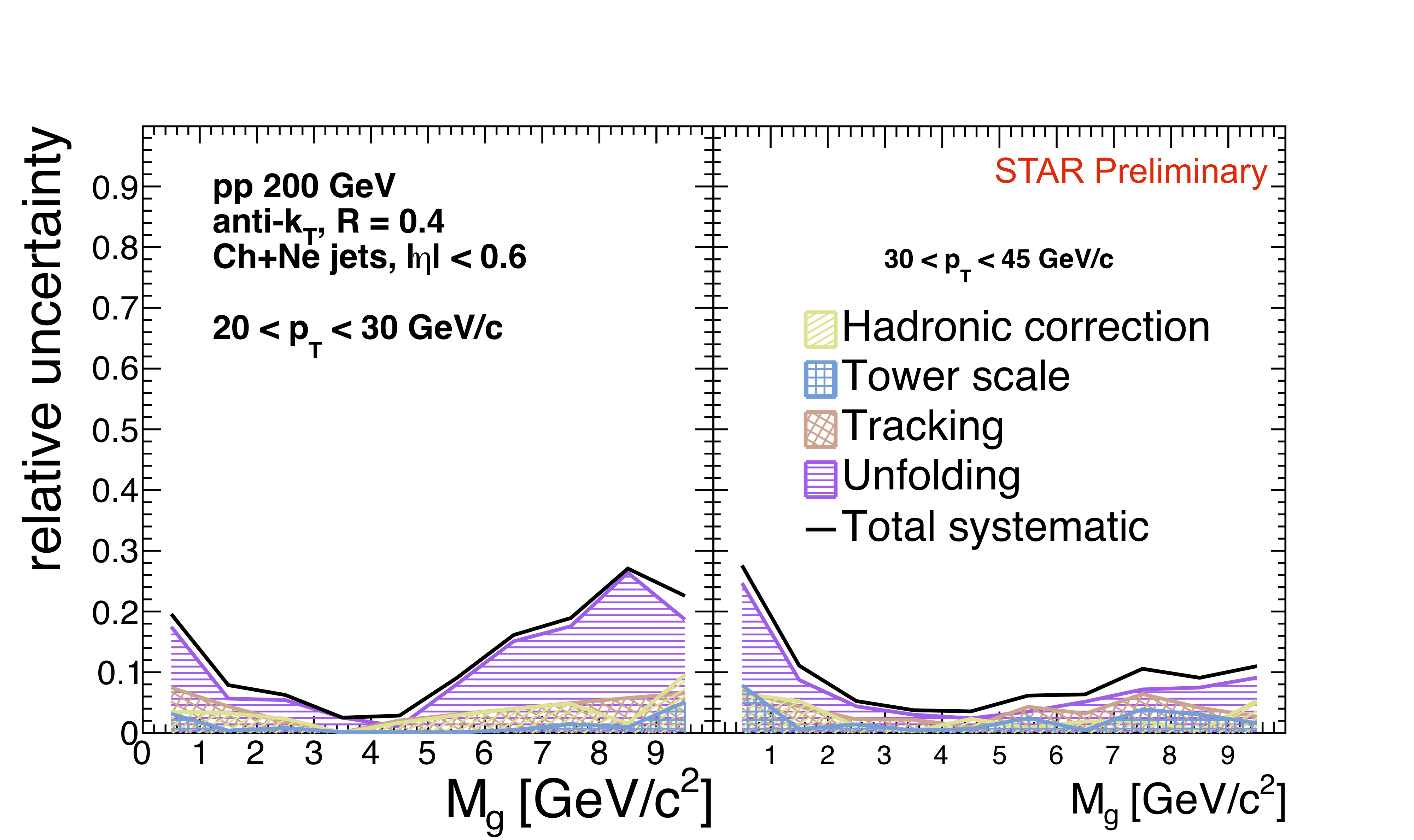Request for Preliminary: plots for DNP'19
.png)
Figure 1: The jet mass scale and resolution at STAR. The particle-level (PL) jets are given by a PYTHIA-6 Monte Carlo simulation with a custom RHIC Perugia tune. The detector-level (DL) jets are given by propagating this output through a GEANT-3 simulation of the STAR detector. The DL and PL jets are matched geometrically, and the ratio of DL and PL mass is taken for varying bins of detector-level jet pT, shown in the various markers.
.png)
Figure 2: Relative systematic uncertainties on the fully corrected jet mass measurement for R = 0.4 jets. The total systematic is taken as the quadrature sum of the four main sources of uncertainty.
Observations:
- The relative uncertainty is small near the peak of the jet mass distribution.
- The unfolding uncertainties (mostly due to the generator-level prior smearing) are dominant.

Figure 3: Same as previous, but for groomed jets.
Observations:
- Same as previous, but smaller systematic uncertainties overall.
.png)
Figure 4: Fully corrected measurement of the jet mass (M) in p+p collisions at \sqrt{s} = 200 GeV for anti-kT charged + neutral jets plotted differentially in bins of pT: 20 - 30, 30 - 45 GeV/c, and jet radius, R: 0.2, 0.4, 0.6. The fully corrected data is represented by the red star markers, with systematic uncertainties displayed as a shaded red band. The statistical errors have been enlarged by hand to account for a mishandling of statistics in the RooUnfold package. After this correction, all error bars remain smaller than the star markers. The fully corrected data is compared here to LO MC event generators PYTHIA-8 (Monash Tune, solid black line), PYTHIA-6 (Perugia Tune, solid blue line), HERWIG-7 (EE4C Tune, solid magenta line).
Observations:
- The jet mass increases with increasing pT and jet radius, R.
- PYTHIA-6 predicts the data in most cases. HERWIG-7 underpredicts the data until the highest radius and pT. PYTHIA-8 overpredicts the data until the lowest radius.
.png)
Figure 5: The same as Fig. 4 but for groomed jet mass (shown for the corresponding ungroomed jet's pT).
Observations:
- The jet mass has less dependence on jet pT and R.
- Grooming reduces the mass by removing wide-angle non-perturbative radiation - less pronounced for low radius jets.
- The Monte Carlo trends are similar to Fig. 3, but with slightly better agreement with data.
- imooney's blog
- Login or register to post comments
